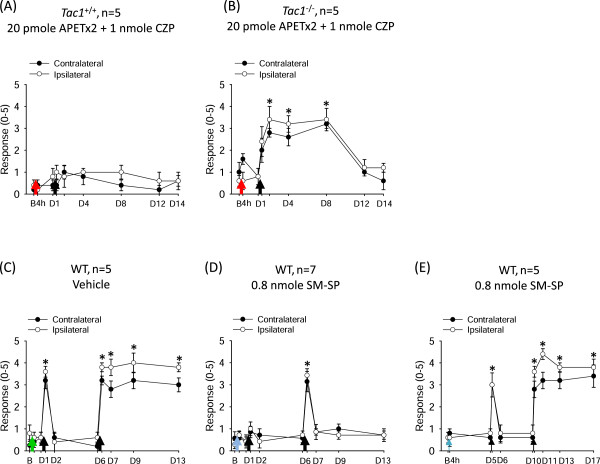Figure 2.

Substance P mediates the acid-induced prolonged antinociception in acid-induced chronic widespread pain model. (A,B) APETx2 and capsazepine prevented acid-induced chronic hyperalgesia in tachykinin 1-positive (Tac1+/+) mice (A) but not Tac1−/− mice (B) when the second acid injection was given the next day. (C) Pretreatment with pH 7.4 saline did not affect the acid-induced hyperalgesia in wild-type mice. (D) Pretreatment with SM-SP abolished the acid-induced transient hyperalgesia the next day and prevented the development of chronic hyperalgesia induced by a second acid injection 5 days later. (E) Pretreatment with SM-SP 5 days before the acid injection did not affect the acid-induced transient and chronic hyperalgesia in the dual acid injection scheme. Black arrows indicate when mice received the intramuscular acid injection. Red arrows indicate when mice received the co-injection of acid with APETx2 and capsazepine. Green arrow indicates when mice received a pretreatment of pH 7.4 saline 1 day before the acid injection. Blue arrows indicate when mice received a pretreatment of SM-SP 1 or 5 days before acid injection. B, baseline on day 0; D, day; WT, wild-type mice; CZP, capsazepine; SM-SP, [Sar9,Met(O2)11]-substance P; Tac1, tachykinin 1. *P < 0.05 compared with the response at baseline.
